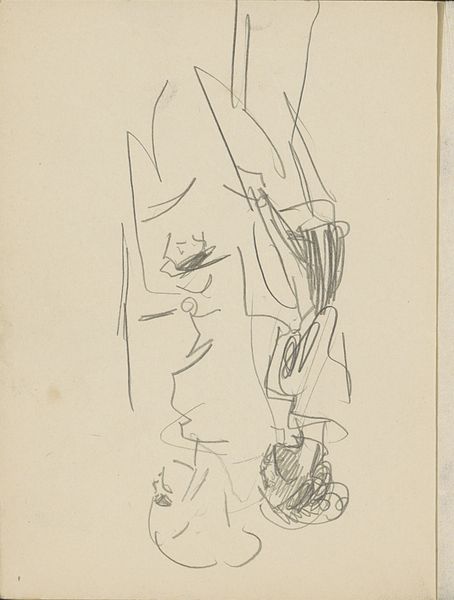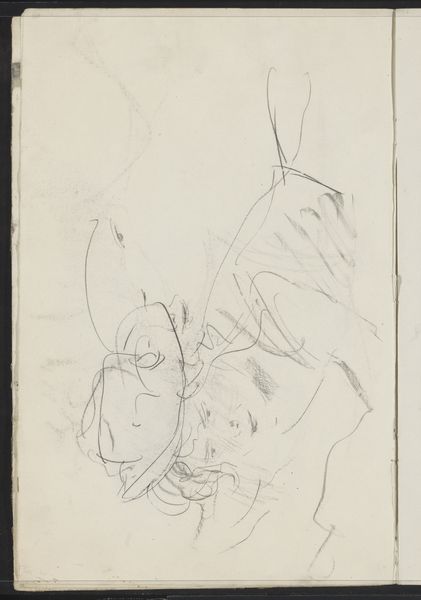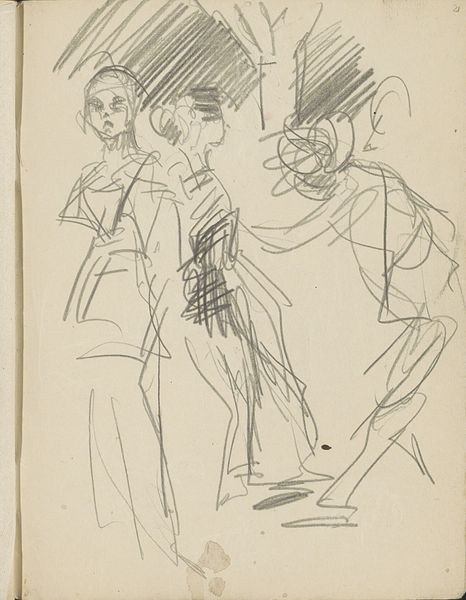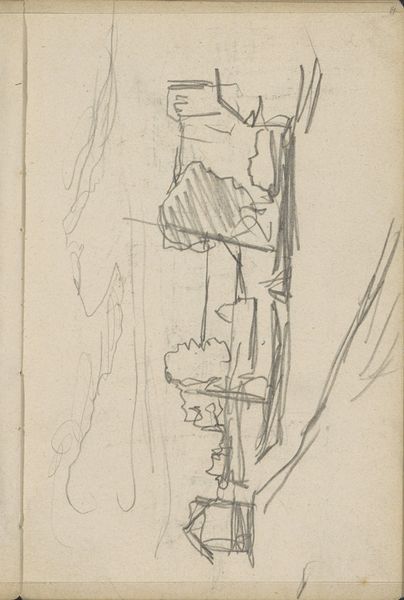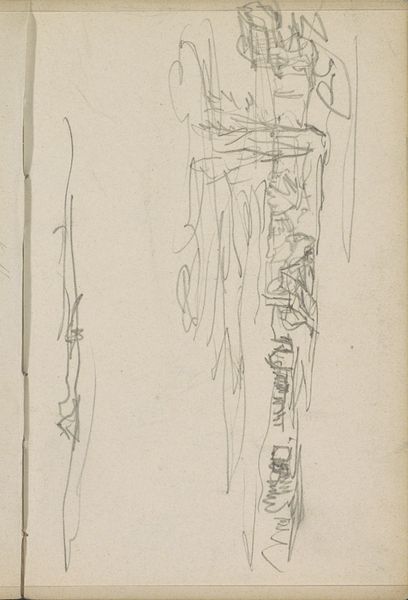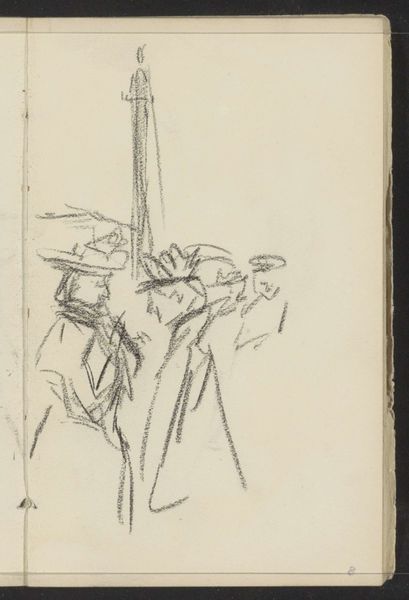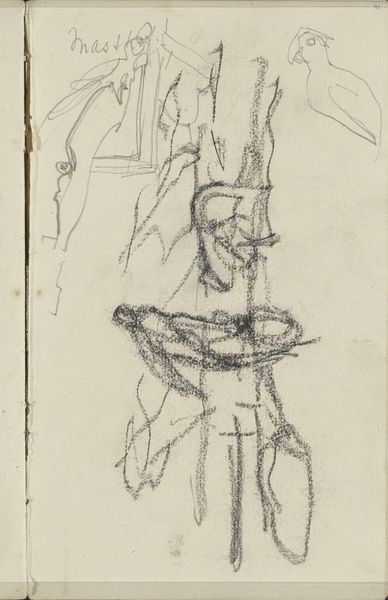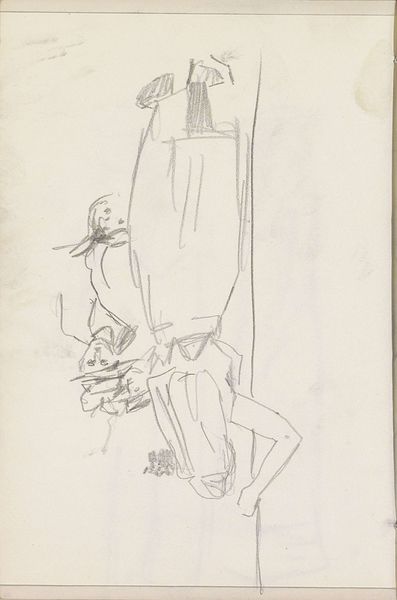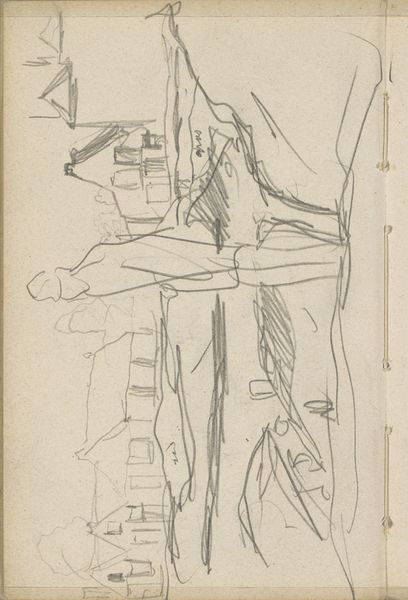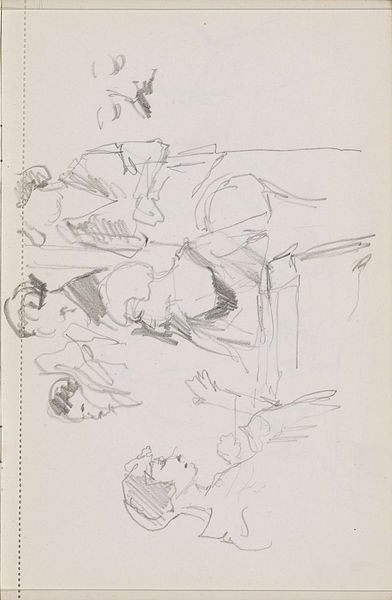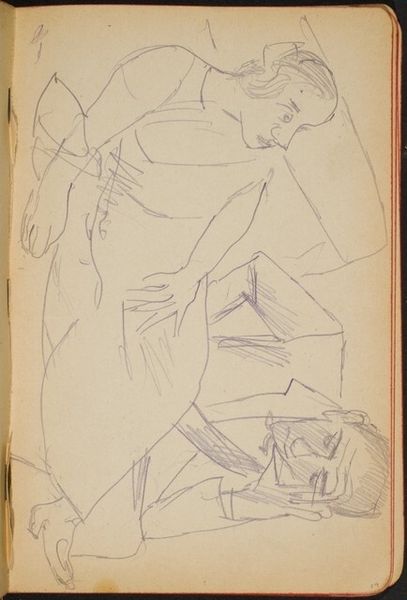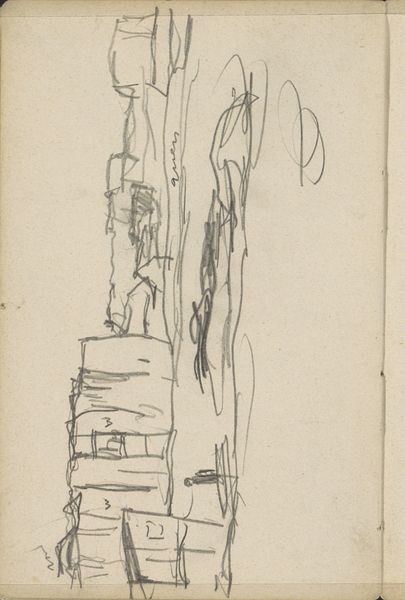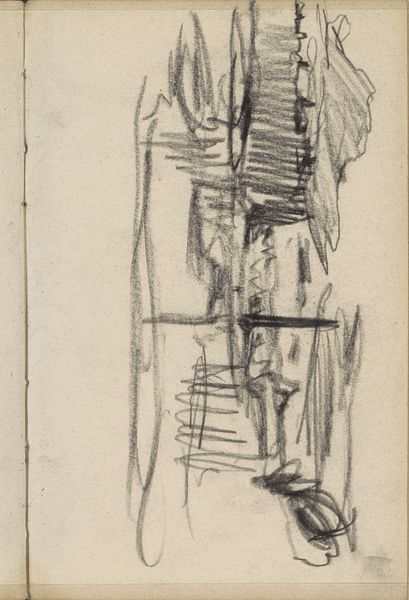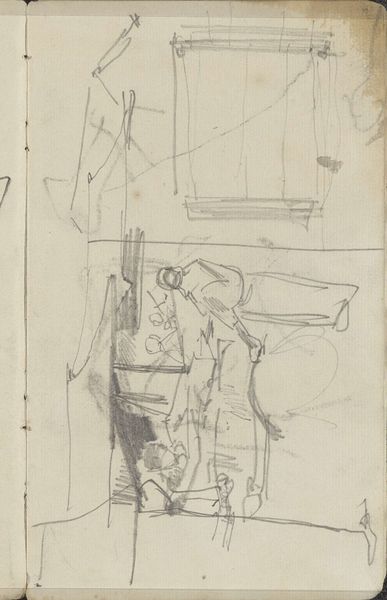
#
imaginative character sketch
#
personal sketchbook
#
idea generation sketch
#
sketchwork
#
character sketch
#
ink drawing experimentation
#
pen-ink sketch
#
sketchbook drawing
#
storyboard and sketchbook work
#
sketchbook art
Copyright: Rijks Museum: Open Domain
Editor: So, this is Isaac Israels' "Standing Figures, Possibly Women" from 1921-1922. It looks like a sketch, pen and ink on paper. I’m struck by how raw it feels, like a glimpse into the artist's thought process. What do you make of the materiality of this piece? Curator: Well, seeing this as a sketch is key. The raw, immediate quality is born directly from the availability of the paper and ink, and the speed at which one can work with these readily available, relatively inexpensive materials. Consider that this isn't an oil painting meant for display in a bourgeois home. It's an artwork exploring figuration; maybe for later works in a different medium? How does its function as a study change your perspective? Editor: That’s interesting! It does feel different knowing it's more about process than product. Like it captures labor somehow. Does that idea—labor— connect to its subject matter? The figures themselves? Curator: Precisely! Consider the clothing – or lack of distinct detail in it. Is Israels depicting wealthy women, or working-class figures, rendered with the same level of focus? The sketch privileges a certain kind of observational speed, one less focused on societal markers like clothing, and more interested in conveying gestural postures and spatial relationships. What are the implications of him blurring those class distinctions? Editor: It flattens them, in a way. He’s prioritizing the human form over their societal role. So, it’s about democratizing representation, in some small way, through accessible materials. Curator: Exactly! The work’s value comes not from some inherent preciousness, but from the labor, the quick capture of observation that informs, perhaps, later works, or helps him hone his understanding of form. Editor: That connection to labor and materials really changes how I see this piece. I wouldn't have considered the societal implications otherwise. Thanks! Curator: And for me, it's helpful to consider the consumption and use cycle: the ready availability of ink, the physical and societal positioning of paper and ink as work tools, leading to how these sketches function in art creation. A complete circuit of material production!
Comments
No comments
Be the first to comment and join the conversation on the ultimate creative platform.
